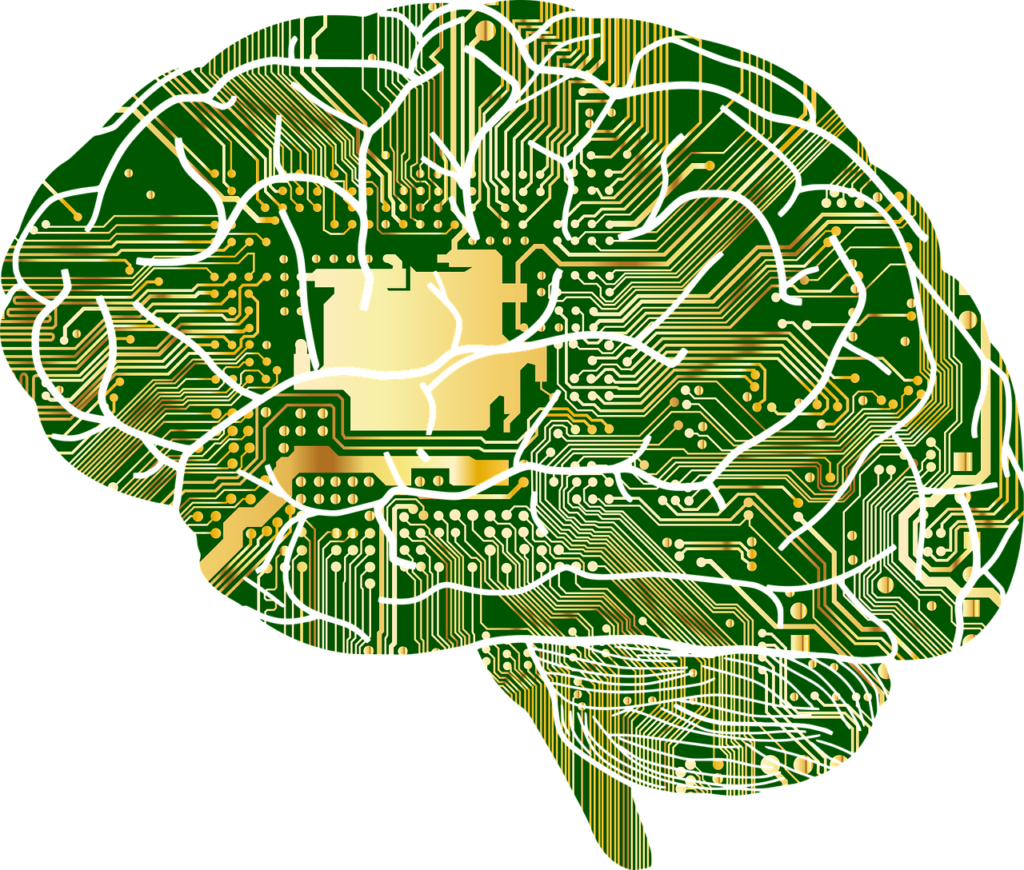
Generative artificial intelligence (AI) techniques are increasingly being applied in clinical research to enhance various aspects of medical data analysis, diagnosis, treatment planning, and drug discovery. By leveraging the power of generative models, researchers can generate synthetic data, simulate biological processes, optimize treatment strategies, and facilitate the development of novel therapeutics. Generative AI holds great promise in revolutionizing clinical research by providing valuable insights, improving efficiency, and driving innovation.
Data Generation and Augmentation: Generative AI can create synthetic medical data to augment existing datasets, thereby addressing challenges related to data scarcity and privacy concerns. Synthetic data generated by generative models can help expand the sample size for analysis, train machine learning algorithms, and enable more robust and accurate models without compromising patient privacy.
Medical Image Synthesis and Analysis: Generative AI can generate realistic medical images, such as MRI scans, CT scans, or histopathological slides, based on given parameters. These synthetic images can be used to augment training data, validate algorithms, and enhance image analysis tasks. Generative models can also aid in anomaly detection, segmentation, and classification of medical images, improving diagnosis accuracy and supporting treatment planning.
Clinical Decision Support: Generative AI techniques can assist healthcare professionals in making informed clinical decisions. By analyzing large volumes of patient data, generative models can identify patterns, predict outcomes, and suggest optimal treatment strategies. This can aid in personalized medicine, disease management, and risk assessment, leading to improved patient care and outcomes.
Drug Discovery and Development: Generative AI is revolutionizing the process of drug discovery by assisting in the design and optimization of novel therapeutic molecules. Generative models can generate virtual compounds, predict their properties, and optimize them based on desired criteria. This approach accelerates the drug discovery pipeline, reduces costs, and enables the exploration of a larger chemical space for potential candidates.
Clinical Trial Design and Optimization: Generative AI can aid in the design and optimization of clinical trials. By simulating patient populations, generating synthetic trial data, and optimizing trial protocols, generative models can enhance the efficiency and effectiveness of clinical trials. This can lead to shorter trial durations, reduced costs, and more accurate evaluation of treatment efficacy.
Patient Risk Stratification: Generative AI techniques can analyze patient data, including electronic health records (EHRs) and genomic information, to identify individuals at higher risk for certain diseases or adverse events. By integrating multiple data sources and considering complex interactions, generative models can provide personalized risk assessments and enable proactive interventions for high-risk patients.
Generative AI has the potential to transform clinical research by leveraging large-scale data analysis, simulating complex biological systems, and facilitating personalized medicine. While there are challenges to overcome, such as interpretability and ethical considerations, the integration of generative AI techniques into clinical research holds great promise for advancing medical knowledge, improving patient care, and driving innovation in the healthcare industry.
Generative AI Use Cases and Real-World Examples
- Medical Image Generation: Generative AI can be used to generate synthetic medical images, such as X-rays, CT scans, and MRIs. These generated images can be used for training machine learning models, augmenting limited datasets, and developing new imaging techniques.
Real-world example: NVIDIA’s research team developed a deep learning model called “Progressive GAN” that can generate high-resolution synthetic medical images. This can be useful for training models when access to real medical images is limited. - Drug Discovery: Generative AI can aid in the discovery and design of new drugs by generating novel molecular structures with desired properties. It can generate virtual compounds that can be screened for potential therapeutic applications, saving time and resources in the drug discovery process.
Real-world example: Insilico Medicine, a company specializing in AI-driven drug discovery, uses generative models to design new small molecules. They have successfully generated compounds with potential anti-cancer properties. - Clinical Notes Generation: Generative AI can generate synthetic clinical notes, which can help in scenarios where access to patient data is restricted due to privacy concerns. These synthetic notes can be used for training and testing natural language processing (NLP) models without compromising patient privacy.
Real-world example: Researchers at Stanford University developed a deep learning model called “MIMIC-III Notes Generator” that can generate synthetic clinical notes. These notes have been used to advance research in NLP and clinical decision support systems. - Data Augmentation: Generative AI can be used to augment clinical research datasets by generating additional synthetic data. This can help overcome limitations in sample size and increase the diversity of the data, leading to improved machine learning model performance.
Real-world example: A study published in the Journal of Digital Imaging used generative models to augment a dataset of retinal fundus images. The augmented dataset improved the performance of a diabetic retinopathy classification model. - Patient Data Synthesis: Generative AI can generate synthetic patient data that resembles real-world data while preserving privacy. This can be useful for sharing or analyzing sensitive healthcare data without revealing the identities of individuals.
Real-world example: The Synthea project is an open-source initiative that generates realistic synthetic patient data. It has been widely used in healthcare research to simulate patient populations for various studies. - Clinical Trial Simulation: Generative AI can simulate virtual patients and generate synthetic clinical trial data. This can help researchers design and optimize clinical trials, explore different scenarios, and estimate potential outcomes before conducting real trials.
Real-world example: The company InSilicoTrials utilizes generative models to simulate patient populations for virtual clinical trials. This approach allows for cost-effective testing of new treatments and protocols. - Disease Progression Modeling: Generative AI can be used to simulate the progression of diseases over time. By generating synthetic patient data that mimics disease progression patterns, researchers can gain insights into disease dynamics, predict disease outcomes, and inform treatment strategies.
Real-world example: Researchers at the University of California, San Francisco, developed a generative model called “GAN-AD” that simulates the progression of Alzheimer’s disease. This model can help researchers understand the underlying mechanisms and develop personalized treatment plans. - Genomic Data Generation: Generative AI can generate synthetic genomic data, including DNA sequences, to augment existing datasets or create diverse populations for genetic research. This can aid in studying complex genetic disorders, identifying biomarkers, and designing precision medicine approaches.
Real-world example: The company Deep Genomics uses generative models to simulate genomic data and predict the impact of genetic variations on disease development. This can assist in the discovery of new therapeutic targets. - Behavioral Modeling: Generative AI can simulate realistic human behaviors, such as movements, interactions, and decision-making processes. This can help in studying patient behavior, designing interventions, and evaluating treatment outcomes.
Real-world example: The Virtual Brain project utilizes generative models to simulate brain activity and behavior. This enables researchers to study neurological disorders and develop personalized treatment strategies. - Data Imputation: Generative AI can impute missing or incomplete data in clinical research datasets. By learning patterns from existing data, generative models can generate plausible values to fill in missing information, improving the completeness and quality of the dataset.
Real-world example: A study published in Nature Communications used generative models to impute missing data in electronic health records. The imputed dataset enabled more comprehensive analysis and improved predictive modeling. - Medical Dialogue Generation: Generative AI can generate realistic medical conversations between healthcare providers and patients. This can be used to train chatbot systems, assist in medical education, and improve patient communication and engagement.
Real-world example: Microsoft Research developed a generative model called “DialoGPT” that can engage in open-ended conversations on a wide range of topics, including medical discussions. This has potential applications in virtual healthcare assistants and patient support systems. - Radiation Dose Optimization: Generative AI can optimize radiation therapy planning by generating alternative treatment plans. By exploring a vast space of possible treatment configurations, generative models can help identify plans that maximize treatment efficacy while minimizing radiation dose to healthy tissues.
Real-world example: Researchers at the University of Texas MD Anderson Cancer Center used generative models to optimize radiation therapy plans for prostate cancer. The generated plans achieved comparable treatment outcomes with reduced radiation exposure.
Conclusion
The application of generative artificial intelligence (AI) techniques in clinical research has the potential to revolutionize various aspects of medical data analysis, diagnosis, treatment planning, and drug discovery. By leveraging the power of generative models, researchers can generate synthetic data, simulate biological processes, optimize treatment strategies, and facilitate the development of novel therapeutics. The use of generative AI holds great promise in providing valuable insights, improving efficiency, and driving innovation in clinical research.
One key area where generative AI proves valuable is in data generation and augmentation. By creating synthetic medical data, generative models address challenges related to data scarcity and privacy concerns. Synthetic data generated by generative models can expand the sample size for analysis, train machine learning algorithms, and enable more robust and accurate models without compromising patient privacy.
Generative AI also plays a significant role in medical image synthesis and analysis. By generating realistic medical images, such as MRI scans, CT scans, or histopathological slides, generative AI assists in augmenting training data, validating algorithms, and enhancing image analysis tasks. Generative models can aid in anomaly detection, segmentation, and classification of medical images, thereby improving diagnosis accuracy and supporting treatment planning.
Furthermore, generative AI techniques provide clinical decision support to healthcare professionals. By analyzing large volumes of patient data, generative models can identify patterns, predict outcomes, and suggest optimal treatment strategies. This empowers personalized medicine, disease management, and risk assessment, ultimately leading to improved patient care and outcomes.
Generative AI is also revolutionizing drug discovery and development. It assists in the design and optimization of novel therapeutic molecules by generating virtual compounds, predicting their properties, and optimizing them based on desired criteria. This approach accelerates the drug discovery pipeline, reduces costs, and enables the exploration of a larger chemical space for potential candidates.
Moreover, generative AI aids in the design and optimization of clinical trials. By simulating patient populations, generating synthetic trial data, and optimizing trial protocols, generative models enhance the efficiency and effectiveness of clinical trials. This results in shorter trial durations, reduced costs, and more accurate evaluation of treatment efficacy.
Additionally, generative AI techniques analyze patient data, including electronic health records (EHRs) and genomic information, to stratify patients based on their risk for certain diseases or adverse events. By integrating multiple data sources and considering complex interactions, generative models provide personalized risk assessments and enable proactive interventions for high-risk patients.
While there are challenges to overcome, such as interpretability and ethical considerations, the integration of generative AI techniques into clinical research holds great promise for advancing medical knowledge, improving patient care, and driving innovation in the healthcare industry. By leveraging large-scale data analysis, simulating complex biological systems, and facilitating personalized medicine, generative AI has the potential to transform clinical research in ways that were previously unimaginable.
In summary, generative AI is poised to reshape the landscape of clinical research, offering immense potential in data generation, medical image analysis, clinical decision support, drug discovery, clinical trial design, patient risk stratification, and more. As researchers continue to explore and refine generative AI techniques, it is crucial to address the associated challenges and ethical considerations. By doing so, we can unlock the full potential of generative AI in clinical research, leading to improved healthcare outcomes, enhanced patient care, and accelerated medical innovation.
Cloudbyz EDC is a user-friendly, cloud-based solution that is designed to store and manage clinical data effectively throughout a clinical trial’s life cycle. Our innovative solution enables clinical research teams to efficiently collect, analyze, and manage clinical data of different complexity and size. Cloudbyz EDC is a scalable solution and meets all the essential regulatory compliance requirements such as FDA- 21 CFR Part 11, GCP, GAMP5, HIPAA, and EU- GDPR.
To know more about Cloudbyz EDC Solution contact info@cloudbyz.com


